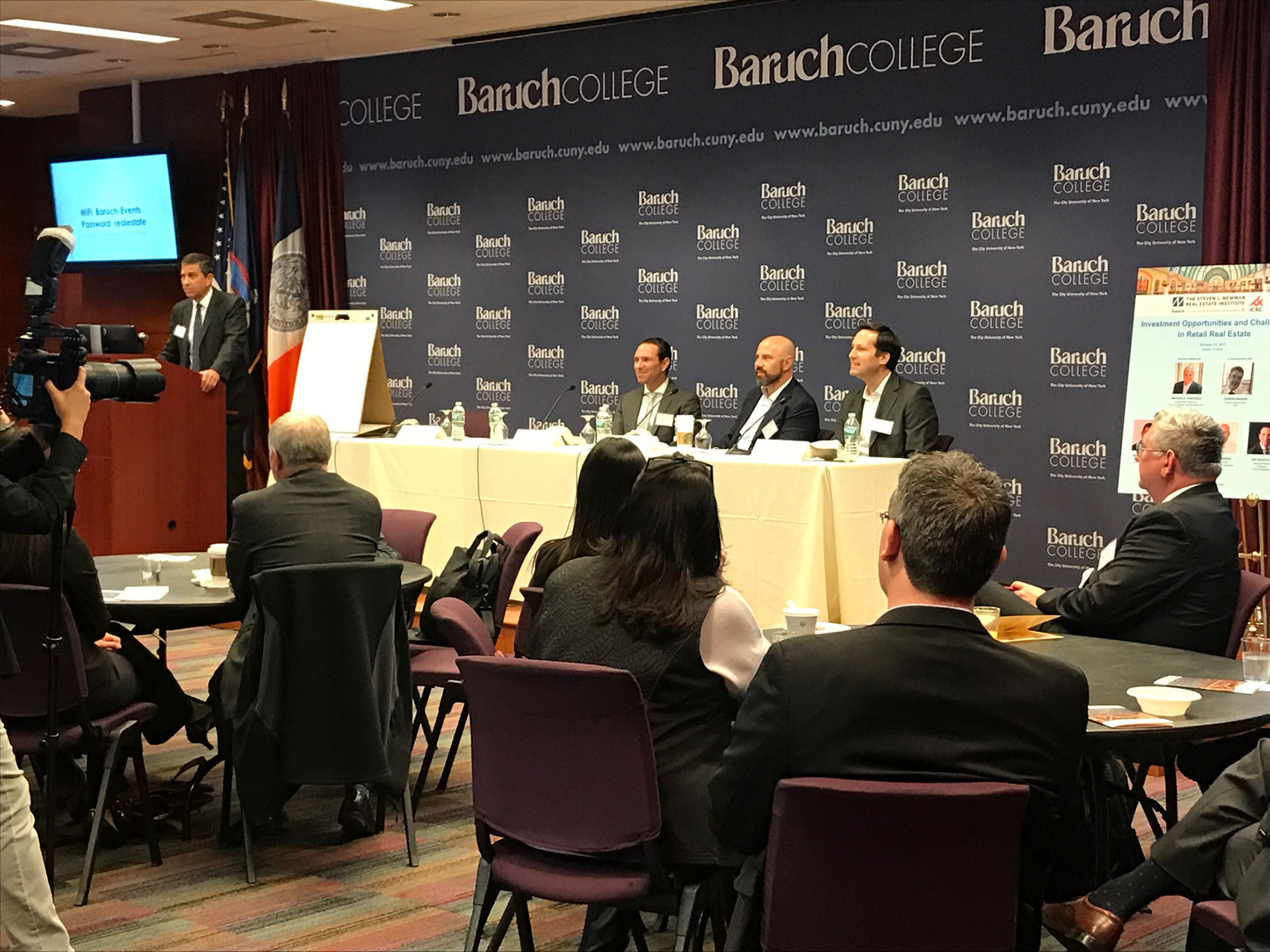“The pendulum always swings,” Michael D. Fascitelli, founder of MDF Capital and a member of the board of trustees of Vornado Realty, told a group of students and investors at Baruch College’s Zicklin School of Business this week. “It has swung too far against retail,” he said, noting that this creates opportunity for investors and talented operators to make big money.

Hutensky Capital Partners' Brad M. Hutensky (far left) moderated a panel discussion including JP Morgan Asset Management's Lee Schaffler, DLC Management's Adam W. Ifshin and Kimco Realty's Conor C. Flynn
Fascitelli and a group of retail experts opined on the trends shaping today’s retail property investment environment. All agreed that the public markets tend to underappreciate the value of retail properties. “The public market doesn’t believe in malls,” Fascitelli said, and this suggests that public companies could later become motivated to sell off malls to private operators.
The threat to brick-and-mortar retail centers is overblown, observed some who asserted that, mainly, it is up to retailers to fend off Internet rivals by offering products and services that draw sales.
“The bad news is the retailers’ own making,” said Adam Ifshin, founder and CEO of DLC Management Corp. “The retailers you see in trouble are the ones that have over-levered themselves or that are selling things nobody wants.” Retailer bankruptcies and store closings have been no higher in 2017 than in recent years, Ifshin said. The difference in the market is that there is less demand from expanding chains, he observed. “This will be the eighth consecutive year with no new net development in the U.S.,” Ifshin said. “Adaptive reuse is the driver of new concepts.”
Retailers that offer a service component are more likely to succeed in the current market, said Lee Schaffler, executive director of J.P. Morgan Asset Management. “Service-based demand depletes the demand for hard goods,” he said, pointing out that a new generation of music-oriented and other subscription-based service providers are dipping into consumers’ wallets on a monthly or weekly basis.
Whatever a chain’s strategy, a store is a key component for success, according to Conor C. Flynn, CEO of Kimco Realty Corp. “Retailers have learned,” he said, “that e-commerce sales drop by as much as 80 percent in the market area when they close a physical store.”
By Brannon Boswell
Executive Editor, Commerce + Communities Today


